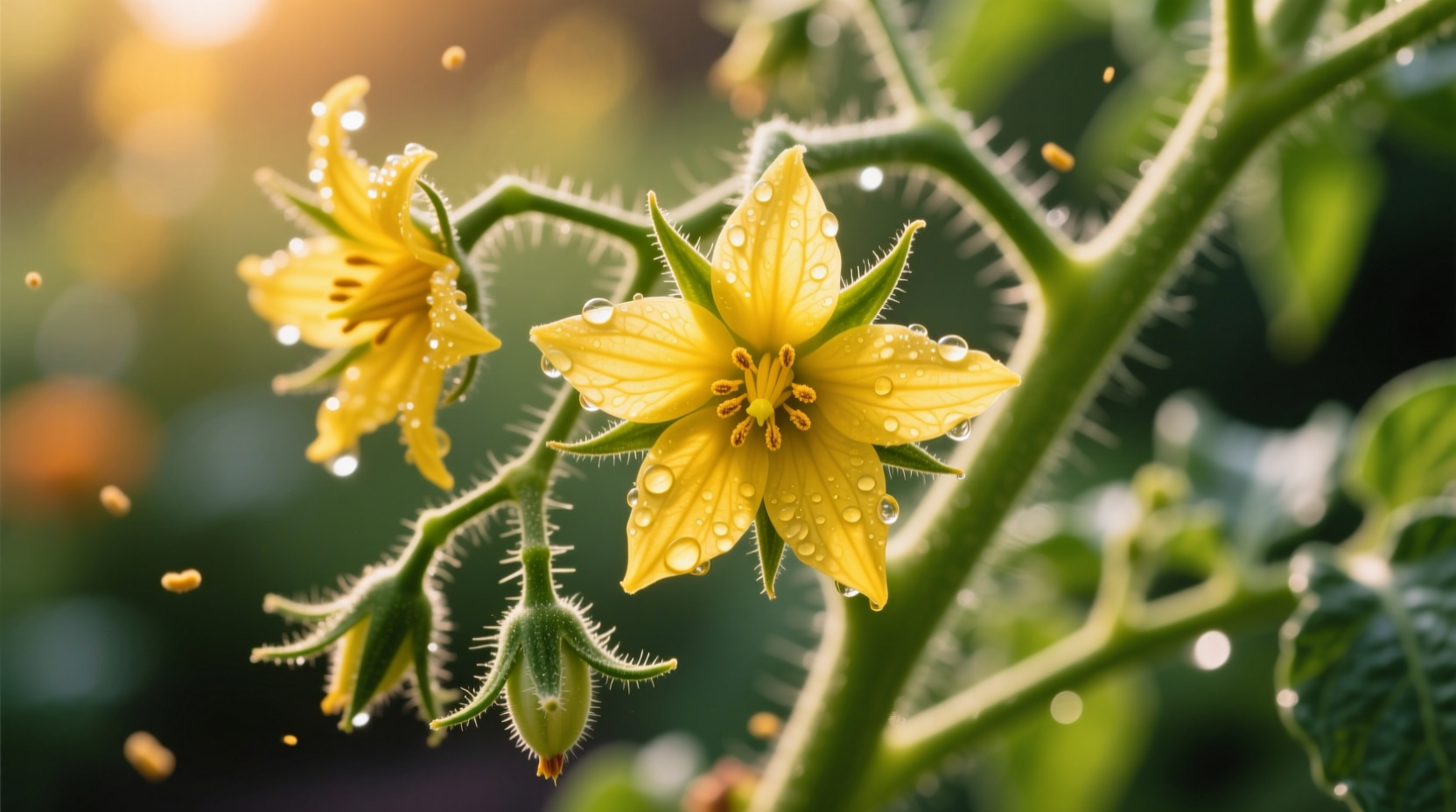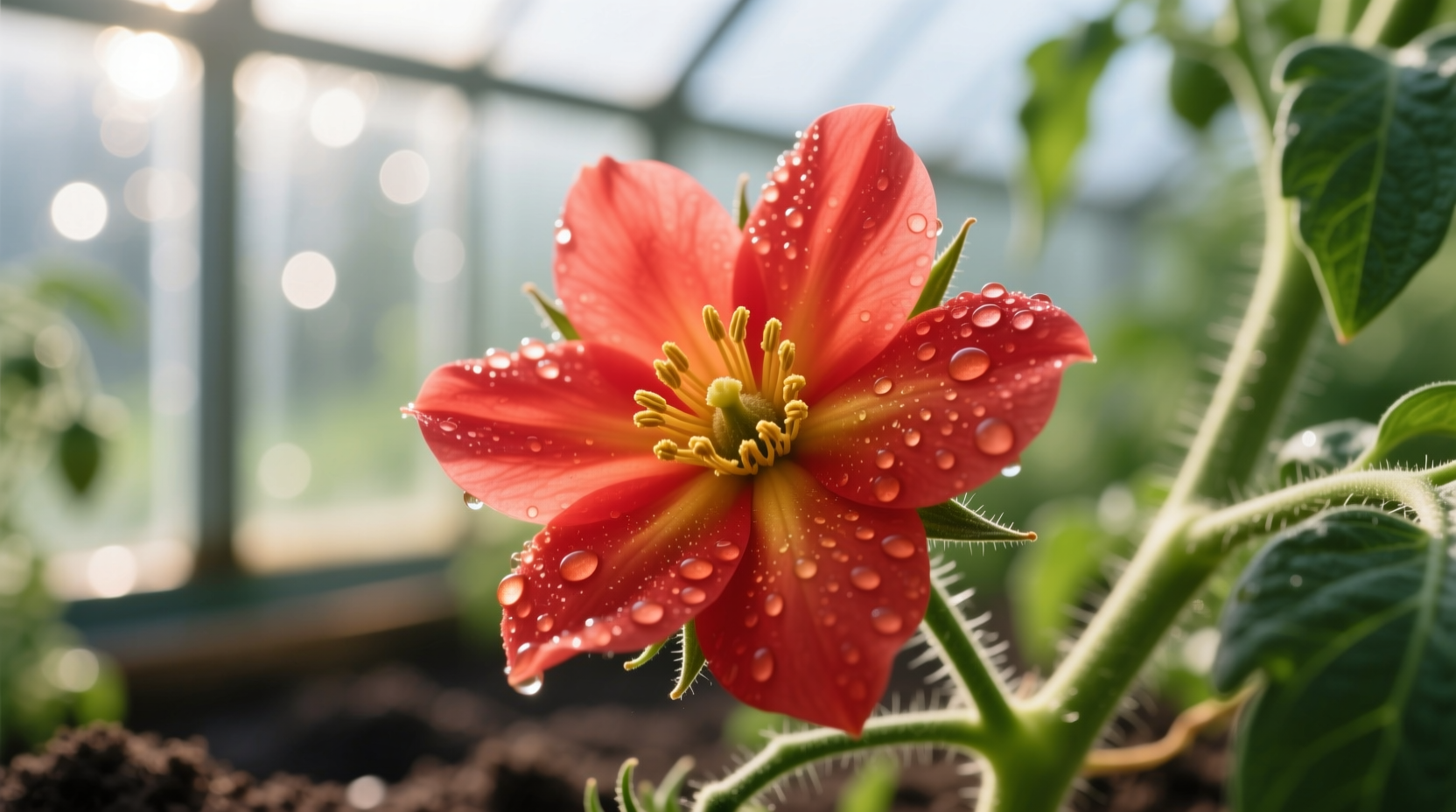Discover exactly why your tomato plants produce blossoms, what each stage means for your harvest, and proven techniques to maximize fruit production. This guide delivers actionable solutions for common blossom problems backed by horticultural science—so you can transform flower clusters into abundant, healthy tomatoes all season long.
Understanding Tomato Blossom Development
Tomato blossoms represent the critical reproductive phase of your plants. These small yellow flowers typically appear 4-7 weeks after transplanting, signaling your plant has matured sufficiently for fruit production. Each blossom cluster (called an inflorescence) contains multiple flowers that open sequentially over several days.
Successful fruit development requires proper pollination, which in tomatoes occurs primarily through self-pollination. The anthers release pollen onto the stigma within the same flower. While tomatoes don't require insects for pollination, gentle vibration from wind or bees significantly improves pollen transfer and fruit set.
Why Blossom Health Determines Your Harvest
The quality and quantity of blossoms directly correlate with your eventual tomato yield. Healthy blossom development indicates:
- Proper nutrient balance (especially phosphorus and calcium)
- Adequate sunlight exposure (minimum 6-8 hours daily)
- Appropriate temperature range (65-85°F ideal for pollination)
- Sufficient water without stress cycles
When blossoms fail to set fruit, it's rarely the flower's fault—it's usually environmental factors or cultural practices needing adjustment. Understanding these relationships helps you intervene before problems escalate.
| Blossom Issue | Primary Cause | Effective Solution |
|---|---|---|
| Blossom drop | Temperatures outside 55-90°F range | Provide afternoon shade during heatwaves; use row covers during cool snaps |
| Poor fruit set | High humidity (>90%) or still air | Gently shake plants mid-morning; improve air circulation |
| Blossom end rot | Calcium deficiency in fruit tissue | Maintain consistent soil moisture; apply calcium spray to blossoms |
| Yellowing blossoms | Nitrogen imbalance or magnesium deficiency | Soil test; apply Epsom salt solution (1 tbsp/gal) |
The Blossom-to-Fruit Transformation Timeline
Understanding the precise developmental stages helps you identify problems early:
- Days 1-3: Flower buds form at leaf axils
- Days 4-7: Buds open into yellow flowers (perfect flowers with both male and female parts)
- Day of opening: Pollen release peaks mid-morning (9-11 AM)
- Hours 12-24 after pollination: Successful fertilization occurs
- Days 3-5 after pollination: Petals drop, tiny fruit begins swelling
- Days 7-10 after pollination: Fruit reaches marble size
- Days 45-60 after pollination: Mature fruit ready for harvest
This timeline comes from research by the University of California Agriculture and Natural Resources, which confirms that consistent environmental conditions during the pollination window (steps 3-4) are most critical for successful fruit set (UC ANR).

Practical Blossom Care Techniques That Work
Implement these science-backed practices to maximize your blossom success:
Optimize Pollination Naturally
While tomatoes self-pollinate, you can significantly improve fruit set:
- Gently shake flowering stems mid-morning when pollen is most viable
- Maintain 20-30% relative humidity for optimal pollen transfer
- Plant borage or marigolds nearby to attract beneficial pollinators
Prevent Blossom Drop Through Environmental Management
Temperature extremes cause 80% of blossom drop cases according to Cornell University's vegetable program. Combat this by:
- Using shade cloth when temperatures exceed 90°F
- Applying 2-3 inches of straw mulch to regulate soil temperature
- Watering at soil level early morning to avoid temperature shock
Nutrition Strategies for Healthy Blossom Development
Proper nutrition prevents common blossom issues:
- Apply phosphorus-rich fertilizer (5-10-10) when first blossoms appear
- Maintain consistent soil moisture (1-1.5 inches water weekly)
- Spray calcium solution (4 tbsp calcium chloride per gallon) on blossoms weekly during fruit set
Research from the USDA Agricultural Research Service confirms that calcium application directly to blossoms reduces blossom end rot by 65% compared to soil applications alone (USDA ARS).
When to Worry About Blossom Issues
Not all blossom abnormalities require intervention. Distinguish normal development from actual problems:
- Normal: First blossom cluster often sets fewer fruit than subsequent clusters
- Normal: Some blossom drop during extreme temperatures (recover when conditions improve)
- Concern: Complete blossom drop across all clusters for 7+ days
- Concern: Blossoms turning brown before opening (indicates fungal infection)
According to the Cooperative Extension System, most tomato varieties naturally shed 10-15% of blossoms without affecting overall yield. Intervention becomes necessary only when fruit set falls below 50% of blossoms.
Advanced Techniques for Challenging Conditions
For gardeners facing persistent blossom issues:
- Container gardening solution: Move pots to optimal sun exposure throughout the day
- High humidity areas: Use oscillating fans to improve air movement around plants
- Cool climate gardening: Choose early-blooming varieties like 'Early Girl' or 'Stupice'
- Urban environments: Hand-pollinate using a small paintbrush between flowers
These techniques have proven effective across diverse growing conditions, as documented in the National Gardening Association's multi-year tomato trials.
Frequently Asked Questions
Should I remove the first tomato blossoms?
Removing the first blossom cluster on indeterminate varieties can strengthen the plant for higher yields later. Pinch off the initial flowers when they're dime-sized, allowing the plant to develop more foliage before fruiting. Determinate varieties should keep all blossoms as they produce one main crop.
How long after blossoms appear do tomatoes form?
Tomatoes typically begin forming 3-5 days after successful pollination, when the petals drop and the ovary starts swelling. From blossom opening to harvest-ready fruit takes approximately 45-60 days depending on variety and growing conditions.
Why are my tomato blossoms not turning into fruit?
The most common causes are temperature extremes (below 55°F or above 90°F), inconsistent watering, high humidity preventing pollen transfer, or nutrient imbalances. Check your local weather patterns and soil conditions—most blossom set issues resolve when environmental factors stabilize.
Do tomato plants need bees to pollinate blossoms?
Tomatoes are primarily self-pollinating and don't require bees, though their vibration improves fruit set. In still conditions, gently shaking the plants mid-morning provides sufficient pollination. Wind alone typically transfers enough pollen for good fruit development in outdoor gardens.
How often do tomato plants produce new blossoms?
Indeterminate varieties continuously produce new blossom clusters throughout the season, typically every 7-10 days under optimal conditions. Determinate varieties produce most blossoms in 2-3 main flushes. Healthy plants can generate 6-12 blossom clusters per season depending on variety and growing conditions.











 浙公网安备
33010002000092号
浙公网安备
33010002000092号 浙B2-20120091-4
浙B2-20120091-4